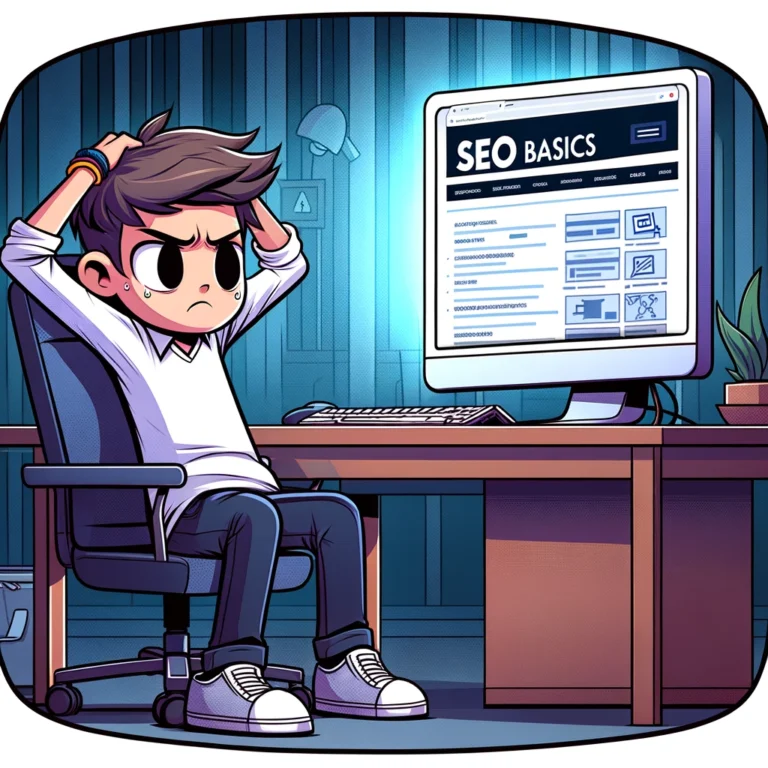In the vast and intricate world of website management, Search Engine Optimization (SEO) serves as a pivotal framework that enhances the visibility and usability of your site. Among various SEO components, the role of maintaining clean, working links cannot be overstated. Broken links not only degrade your website’s user experience but also negatively impact your SEO performance. In this guide, we’ll dive into how you can identify and fix broken links on your website, ensuring a smooth and rewarding experience for both your visitors and search engines.
Understanding Broken Links
A broken link, often referred to as a “dead link,” occurs when a hyperlink on your website points to a page or resource that no longer exists. These links can lead to an error page, typically a “404 not found” error, which indicates that the webpage the link was pointing to couldn’t be found on the server. This can happen for various reasons such as a webpage being deleted, moved without proper redirection, or the URL structure being changed.
Why Should You Care About Broken Links?
- User Experience: Broken links create a frustrating experience for users. A link promising to provide more information or resources that leads nowhere can annoy users, potentially driving them away from your site.
- SEO Impact: Search engines like Google consider the quality of user experience as a factor in ranking websites. A high number of broken links might signal to search engines that the website is neglected or outdated, which can negatively affect your site’s ranking.
- Website Credibility: Frequent dead links can damage the credibility of your website. If visitors encounter multiple broken links, they may question the reliability of the content and the website overall.
How to Identify Broken Links
Identifying broken links is the first crucial step in maintaining your website’s health. Here are some effective methods to spot these links:
Manual Checking
Though not feasible for larger sites, manually clicking through the links on your website is a straightforward approach to identify broken links. This method can be effective for smaller websites or checking critical pages like your homepage or contact page.
Using Online Tools
There are numerous online tools and software available that can automate the process of finding broken links. Some popular options include:
- Google Search Console: This free tool by Google not only helps in monitoring your website’s performance in search but also reports the broken links that Google’s crawlers find.
- Screaming Frog SEO Spider: This desktop program crawls websites’ links, images, CSS, script, and apps to evaluate onsite SEO. It provides a report of all the broken links (404 errors) it finds.
- Ahrefs: This tool offers an exhaustive suite of digital marketing analysis, including a powerful site audit tool that can identify broken links, among other issues.
- Broken Link Checker for WordPress: If your website runs on WordPress, this plugin can continuously monitor your site for broken links and notify you if any are found.
Webmaster Tools
Most web hosting services offer some form of webmaster tools that include link checking utilities. These tools can automatically scan for and report broken links.
Fixing Broken Links
Once you’ve identified the broken links, the next step is to fix them. Here are the most common ways to resolve these issues:
Update the Link
If the linked content has moved, update the hyperlink to point to the correct page. Make sure that the new URL is correct and that it directs users to the intended content.
Remove the Link
If there’s no direct replacement for the linked content, consider removing the hyperlink altogether. This is often better than leaving a broken link on your site.
Redirect the Link
For links that point to deleted or obsolete pages, setting up a 301 redirect is a beneficial approach. This method redirects visitors and search engines to a relevant page on your site, preserving the user experience and any link equity that was attached to the old URL.
Contact Webmasters
If a broken link points to an external website, try reaching out to the webmaster of that site to inform them about the issue. They might fix the broken link, or you might need to find an alternative resource.
Maintaining a website free of broken links is crucial for ensuring a quality user experience and solid SEO. By regularly checking and fixing broken links, you not only enhance your website’s usability but also bolster its credibility and search engine ranking. With the right tools and techniques, managing broken links can be an integral part of your ongoing website maintenance strategy.

Best Practices for Preventing Broken Links
Preventing broken links is just as important as identifying and fixing them. Adopting certain best practices can significantly reduce the occurrence of broken links on your website. Here are some preventive measures:
Regular Audits
Conduct regular comprehensive audits of your website. Use the tools mentioned earlier to periodically check for broken links. This not only helps in catching and fixing dead links but also ensures that your website remains updated with the latest SEO practices.
Consistent URL Structures
When creating new pages or restructuring your website, maintain consistent URL structures and avoid unnecessary changes. If changes are necessary, ensure proper redirects are in place to avoid creating broken links.
Quality Control Before Publishing
Before publishing any new content, make sure all links in the content are working correctly. This simple check can prevent many issues related to broken links from arising in the first place.
Using Reliable External Links
While linking to external sites, make sure the sites are reliable and not prone to frequent changes. Prefer linking to established and authoritative sources as they are less likely to move or remove pages without proper redirects.
Monitoring External Links
For links to external sites, periodically verify that these sites are still available. External websites can change their structure without notice, which can lead to broken links on your website. Tools like Ahrefs can help monitor the status of external links.
How to Leverage Redirects Properly
Using redirects is a common method to handle broken links, especially when dealing with deleted or permanently moved content. However, it’s crucial to use redirects wisely to maintain SEO value and provide a good user experience.
301 Redirects
A 301 redirect is used to indicate that a page has been permanently moved. It passes most of the SEO link juice to the redirected page, which is beneficial if you’re moving your site to a new domain or reorganizing your website.
302 Redirects
A 302 redirect indicates a temporary change and should be used sparingly as it does not pass on link equity like a 301 redirect. Use 302 redirects if you are temporarily replacing a page or if content is under maintenance.
Redirect Chains
Avoid creating long chains of redirects (e.g., Page A redirects to B, which redirects to C, and so forth). This can slow down page loading times and dilute SEO value. Aim to update the original link directly to the final destination page.
Educating Your Team
Educate everyone involved in website management about the importance of link integrity. Whether they are content creators, web developers, or digital marketers, understanding the impact of broken links can encourage better practices across your organization.
Tools Integration
Integrate link checking tools directly into your content management system (CMS). Some CMS platforms allow for plugins or extensions that can automatically check for broken links before content goes live. This integration can greatly reduce the chance of publishing broken links.
Conclusion
Broken links are more than just a nuisance—they can significantly impact the user experience and SEO performance of your website. By implementing proactive strategies and regular maintenance, you can ensure your website remains robust and effective. Regular training for your team and integrating the right tools into your daily operations will make managing broken links an effortless part of your workflow.
By understanding how to effectively manage and prevent broken links, you not only enhance your site’s usability but also improve its overall health in the eyes of both users and search engines. Remember, a well-maintained website is a powerful tool in achieving and maintaining top SEO performance.
References (continued)
- Google Webmaster Blog: https://webmasters.googleblog.com/
- WordPress Plugins Directory: https://wordpress.org/plugins/
- Ahrefs Webmaster Tools: https://ahrefs.com/webmaster-tools
- Google Search Console: https://search.google.com/search-console/about
- Screaming Frog SEO Spider: https://www.screamingfrog.co.uk/seo-spider/
- Ahrefs: https://ahrefs.com
- Broken Link Checker for WordPress: https://wordpress.org/plugins/broken-link-checker/
Remember, the key to successful SEO is not just in fixing what’s broken but also ensuring it stays intact. Keeping your website free from broken links is a continuous effort that pays off by providing a seamless experience to your visitors and maintaining your site’s reputation with search engines.



